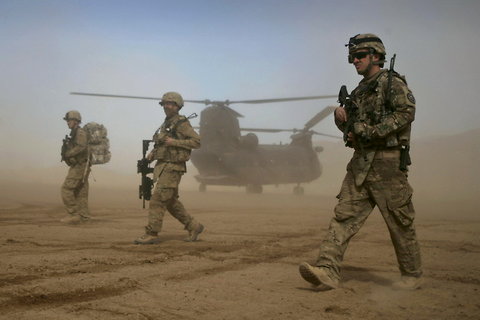After the ouster of the Taliban in 2001, thousands of Afghan families returned from abroad, or came in from the countryside, to construct urban and increasingly Westernized lives. They built homes and careers based on an influx of foreign money, expanded bureaucracies and new educational opportunities.
And they are the ones most haunted by the fear that it could all just be a bubble, doomed to pop once foreign money and Western militaries stop holding it up.
“We are enjoying life,” said Rasool Mohibzada, 31, a former taxi driver who sold chickpeas and balloons in Pakistan during the Taliban years, but after returning to Kabul won a job as an I.T. manager for the British Council, the cultural relations agency of the British government.
Sitting in the large house he built on a $95,000 plot of land in airy western Kabul and playing with his 5-year-old daughter, he is a member of a young Afghan generation whose eyes burn with modest aspiration for what would be by outside standards an ordinary life — access to electricity, schools for his son and daughter, rule of law, security.
“But I am quite afraid about the future at the moment,” he said. “If I got the chance, I would go now.”
Though all of Afghanistan’s major cities have grown and changed, the biggest differences, by far, can be seen in Kabul. Its population has exploded, now more than 5 million compared with 1.2 million in 2001, and its streets, planned for 30,000 cars, are clogged with 650,000, according to the mayor, Mohammad Yunus Nawandish. He is drawing up an expanded city plan that can accommodate up to 8 million residents.
The new urban elite makes up only a tiny slice of Afghan life — most of the newcomers to Kabul are impoverished migrants who now occupy terraces of rough mud houses that have splashed up onto the rocky hillsides surrounding the city.
And the norm is still grinding poverty for about 70 percent of Afghans, who live in the countryside, or about 25 million people by some estimates. Taken as a whole, life expectancy for Afghans is still just 48 years, and the average annual national income per capita is about $410. That makes the contrast with the markers of the middle class all the more striking: in Kabul, there are beauty parlors, a bowling alley, new television stations, access to health care (although Afghans must travel abroad for serious treatment), restaurants like Afghan Fried Chicken and children’s birthday parties hosted at nice hotels.
At the private American University of Afghanistan, privileged young adults — some of them the offspring of top officials and businessmen who have minted fortunes in the war economy — stride the five-acre Kabul campus, paying up to $6,000 a year for degrees in law and other subjects.
Some in the new generation have succeeded in the private sector, like Haji Safiullah, 42, a serious, thin-faced man, who owns three pharmacies and is branching out into construction, building apartment blocks in Kabul, Jalalabad and Mazar-i-Sharif.
“I am one of the people who have invested more than $1 million in different businesses,” Mr. Safiullah said.
Even as the United States is deliberating how large a force, if any, will stay in Afghanistan past the 2014 end of the international combat mission, Mr. Safiullah holds to the belief that the Americans will not leave Afghanistan altogether for many years. All the same, he is clear about the shape that catastrophe will take if the world averts its gaze: a deterioration of security and an economic collapse.
“To tell you the truth, I am not that worried about the future, because the international community has invested a lot in Afghanistan,” he said. “They will not let this investment fail.”
However, he keeps a Kalashnikov rifle beneath his counter just in case.
Article source: http://www.nytimes.com/2013/02/12/world/asia/middle-class-afghans-face-a-murky-future.html?partner=rss&emc=rss
